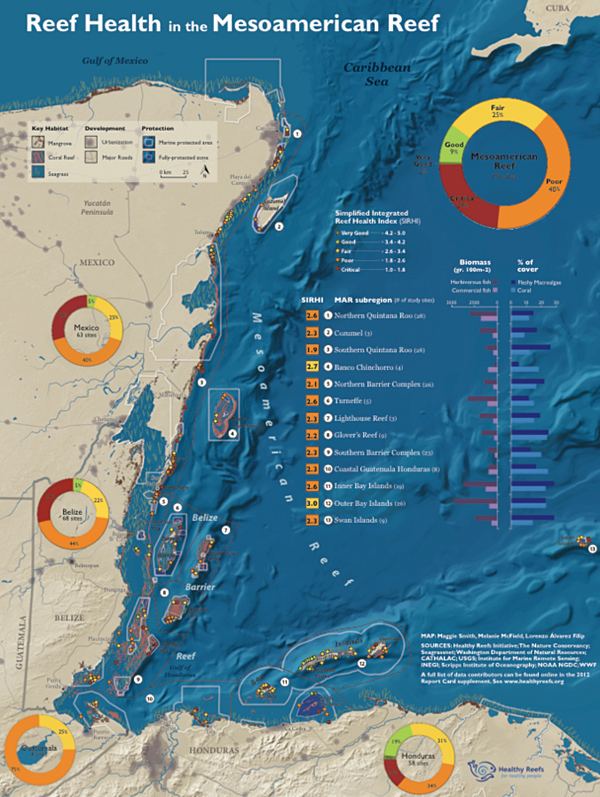 | ||
Exploring the mesoamerican barrier reef system hd trailer
The Mesoamerican Barrier Reef System (MBRS), also popularly known as the Great Mayan Reef or Great Maya Reef, is a marine region that stretches over 1,000 kilometres (620 mi) from Isla Contoy at the tip of the Yucatán Peninsula down to Belize, Guatemala and the Bay Islands of Honduras. The reef system includes various protected areas and parks including the Belize Barrier Reef, Arrecifes de Cozumel National Park, Hol Chan Marine Reserve (Belize), Sian Ka'an biosphere reserve, and the Cayos Cochinos Marine Park. Belize's coastline, comprising the Belize Barrier Reef, is home to approximately 80% of MBRS. The Belize Barrier Reef is the largest barrier reef in the northern hemisphere and the second largest barrier reef in the world. The Belize Barrier Reef and Belize's three offshore atolls, several hundred sand cays, mangrove forests, coastal lagoons and estuaries—collectively termed, the Belize Barrier Reef Reserve System—has been designated a World Heritage Site by UNESCO (1996).
Contents

Location
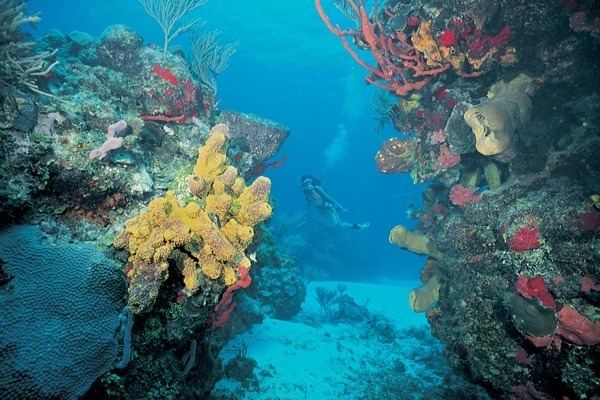
The reef system extends along the coast of five countries: Mexico, Belize, Guatemala, and Honduras. It begins near Isla Contoy on the northern tip of the Yucatán Peninsula and continues south alongside the Riviera Maya including areas like Cozumel and Banco Chinchorro. It then continues south down the eastern coast of Belize including many cayes and atolls. It extends past the north-east corner of Honduras and ends in Nicaragua.
Biodiversity
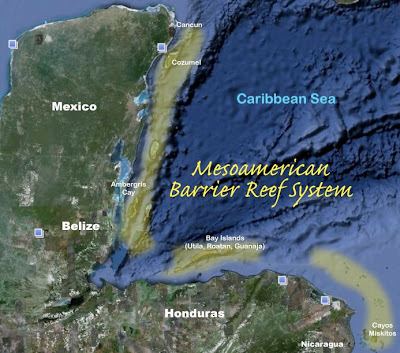
The reef system is home to more than 65 species of stony coral, 350 species of mollusk and more than 500 species of fish. There are numerous species that live in or around the reef system that are endangered or under some degree of protection, including the following: sea turtles (green sea turtle, loggerhead sea turtle, leatherback turtle, and the hawksbill turtle), the queen conch, the West Indian manatee, the splendid toadfish, the American crocodile, the Morelet's Crocodile, the Nassau grouper, elkhorn coral, and black coral.
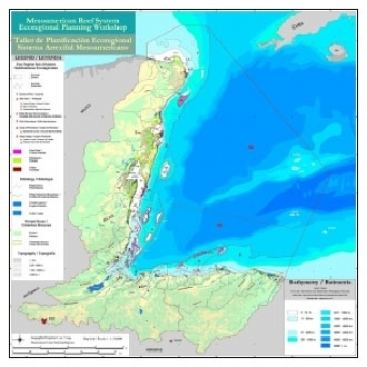
The reef system is currently in the early stages of its greatest challenge to date....the invasion by the red lionfish (Pterois volitans and Pterois miles), which is native to the Indo-Pacific region.

Lionfish do great damage to the reef system by eating nearly every reef tending species, like cleaner shrimp and algae eating species that keep the corals clean, alive and disease free.
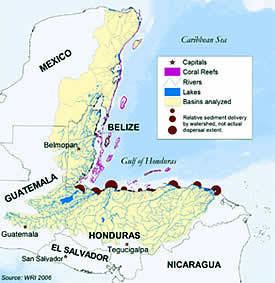
Lionfish eat up to 90% of the reef tending species in a given area within just a few months so reef death from lionfish can be quick.
Also, valuable commercial species, such as lobster, are being negatively affected by the spread of the lionfish due to the enormous appetite of the invasive lionfish.
The reef system is home to one of the world's largest populations of manatees, with an estimated 1,000 to 1,500 of them.
Some northern areas of the reef system near Isla Contoy are home to the largest fish on the planet, the whale shark. The normally solitary whale sharks congregate there in social groups to eat and to mate.
